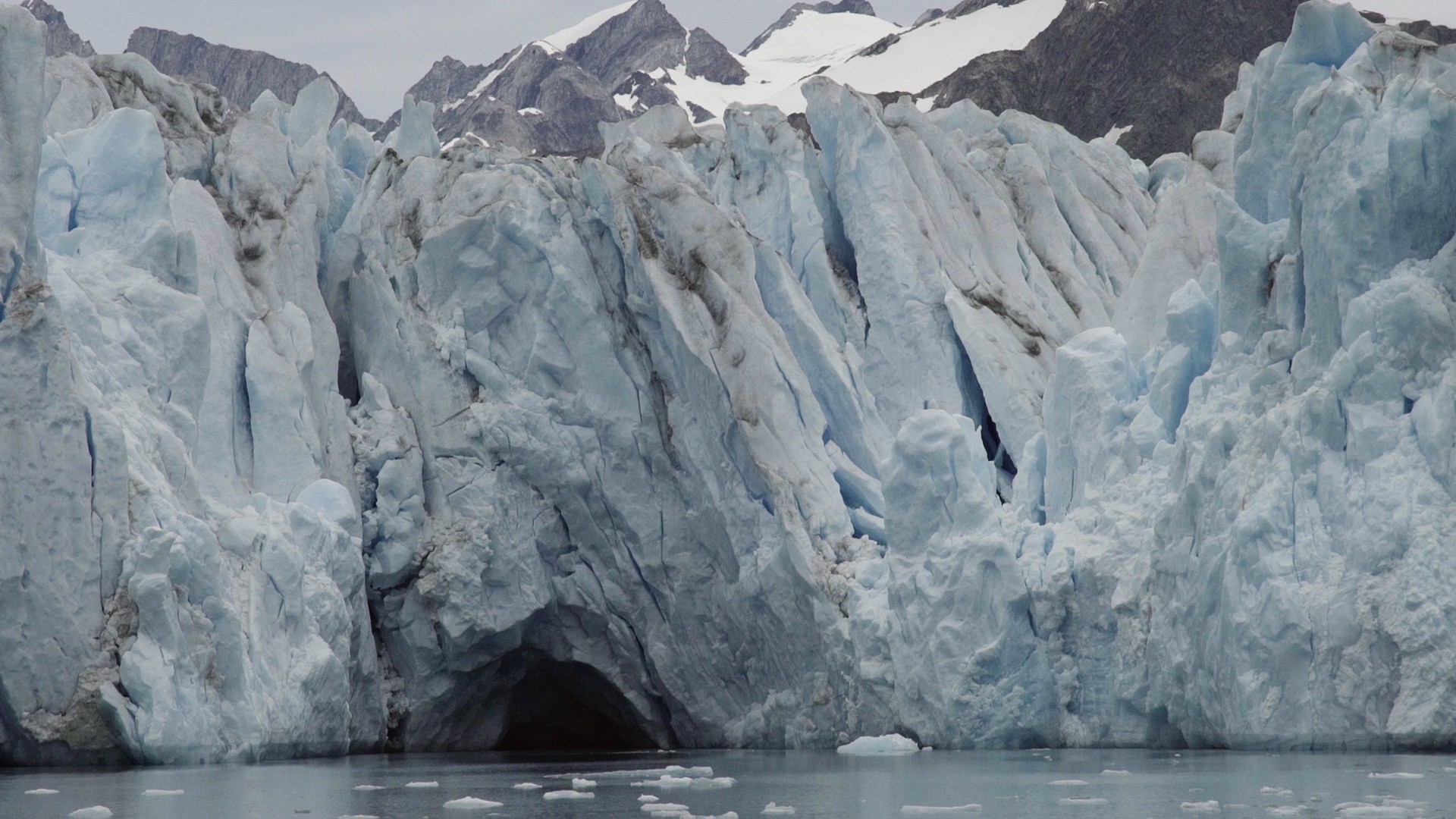Flickr: Bernard Spragg
A lot of what we know about climate change comes from intricate mathematical models. But what if those models are wrong, and it's much worse than we thought?According to a new study, scientists have been estimating the impact of a critical aspect of glacier melt all wrong, and in fact it's 100 times worse than previously believed. This finding has implications for our understanding of sea level rise as a result of climate change, which threatens to flood islands and coastal cities and displace millions of people.In a paper published in Science on Thursday, researchers from the University of Oregon took a look at how the LeConte Glacier in Alaska was melting underwater. Rather than rely on models to estimate the rate of underwater melt—when warm ocean water causes the underside of a glacier to melt—they took direct measurements. According to their findings, the underwater melt rate of the glacier was 100 times faster than the models predicted.Melting underwater 100 times faster doesn’t mean that the glaciers are retreating overall at the same rate, however. For these Alaskan glaciers, losing mass is a combination of surface melting, icebergs breaking off, and underwater melting. However, co-author Rebecca Jackson said, underwater melting accelerates the process of glacial melting, a process that scientists are only beginning to understand and quantify.“The real importance of the underwater melting is that it’s the spark that accelerates the retreat, it creates a feedback loop,” Jackson said. “The melting itself is not the glacial retreat, it gets the whole thing to flow faster.”Because we didn’t fully understand it, this feedback loop hasn’t been readily factored into our projections of sea level rise caused by melting glaciers. According to the study, scientists have been going about estimating underwater melt for tidewater glaciers, which flow into the ocean, all wrong. Tidewater glaciers interact with the ocean differently than other sea ice. Many of the models we use to determine glacial melting are based on horizontal ice shelves and then adapted to tidewater glaciers, which have a much more vertical boundary with the sea. With a better understanding of the physics of tidewater glaciers specifically, Jackson said she hopes that we can build better models.The researchers used some clever approaches to measuring glacier melt, including autonomous kayaks equipped with jet engines. They also used multibeam sonar to scan the glacier underwater in August 2016 and May 2017, evaluating the exact shape of the ice-ocean interface.“Sonar is usually what we use to scan the sea floor or look at the shape of that,” Jackson said. “We turned it sideways and pointed it at the glacier.”Observing glaciers directly is notoriously tricky. The most important region to test is within a half-mile of the glacier, but large chunks of ice breaking off make it pretty dangerous. To overcome this barrier, the researchers combined sonar to observe the underwater melting with radar for the above-water melting.“We’re trying to get at the physics,” Jackson said. “When we know that better, we can combine it with our understanding of the trends of climate change.”
According to the study, scientists have been going about estimating underwater melt for tidewater glaciers, which flow into the ocean, all wrong. Tidewater glaciers interact with the ocean differently than other sea ice. Many of the models we use to determine glacial melting are based on horizontal ice shelves and then adapted to tidewater glaciers, which have a much more vertical boundary with the sea. With a better understanding of the physics of tidewater glaciers specifically, Jackson said she hopes that we can build better models.The researchers used some clever approaches to measuring glacier melt, including autonomous kayaks equipped with jet engines. They also used multibeam sonar to scan the glacier underwater in August 2016 and May 2017, evaluating the exact shape of the ice-ocean interface.“Sonar is usually what we use to scan the sea floor or look at the shape of that,” Jackson said. “We turned it sideways and pointed it at the glacier.”Observing glaciers directly is notoriously tricky. The most important region to test is within a half-mile of the glacier, but large chunks of ice breaking off make it pretty dangerous. To overcome this barrier, the researchers combined sonar to observe the underwater melting with radar for the above-water melting.“We’re trying to get at the physics,” Jackson said. “When we know that better, we can combine it with our understanding of the trends of climate change.”
Advertisement
